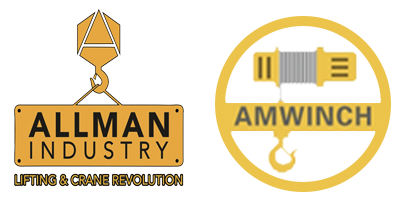What is a Small Rope Hoist and How Does It Work?
A small rope hoist is a versatile lifting device that is used to raise or lower heavy loads in a controlled manner. It consists of a pulley system and a rope or cable, which is wrapped around the pulley. When the rope is pulled, the load is lifted, and when the rope is released, the load is lowered. Small rope hoists are commonly used in various industries, including construction, manufacturing, and warehousing.
The Benefits of Using a Small Rope Hoist
Small rope hoists offer several advantages over other types of lifting equipment. Firstly, they are compact and portable, making them ideal for use in tight spaces or on job sites with limited access. Secondly, they are easy to install and operate, requiring minimal training. Additionally, small rope hoists are highly durable and can handle heavy loads with ease. They also provide precise control and can be used for both vertical and horizontal lifting tasks.
Choosing the Right Small Rope Hoist for Your Needs
When selecting a small rope hoist, there are several factors to consider. Firstly, you need to determine the maximum load capacity required for your specific application. It is essential to choose a hoist that can handle the weight of your heaviest loads. Secondly, consider the lifting height or distance the hoist needs to cover. Ensure that the hoist's lifting height is sufficient for your needs. Finally, consider the power source and control options. Small rope hoists are available in electric, manual, and pneumatic models, each with its own advantages and limitations.
Key Features to Look for in a Small Rope Hoist
When purchasing a small rope hoist, it is important to look for certain key features that enhance its functionality and safety. Look for hoists with adjustable lifting speeds, as this allows for greater control and precision. Additionally, choose a hoist with a reliable braking system to ensure the load remains secure when not in use. Other important features include overload protection, emergency stop buttons, and robust construction materials that can withstand harsh working conditions.
Common Applications of Small Rope Hoists
Small rope hoists are widely used in various industries due to their versatility and efficiency. They can be used for lifting and moving heavy objects in construction sites, warehouses, factories, and workshops. Small rope hoists are also commonly used in the entertainment industry for rigging lights and audio equipment. In addition, they find applications in the automotive sector for engine removal and installation. The compact size and ease of use make small rope hoists an indispensable tool in many industries.
Tips for Safe and Efficient Use of Small Rope Hoists
While small rope hoists are designed for safe operation, it is crucial to follow certain guidelines to ensure the safety of operators and the integrity of the hoist. Always inspect the hoist before each use, checking for any signs of wear or damage. Only operate the hoist within its rated capacity and never exceed the maximum load limit. Use appropriate rigging techniques and ensure the load is properly secured before lifting. Regular maintenance and lubrication of the hoist are also essential for optimal performance and longevity.
How to Maintain and Extend the Lifespan of a Small Rope Hoist
Proper maintenance is key to extending the lifespan of your small rope hoist and ensuring its reliable performance. Regularly inspect the hoist for any signs of wear, such as frayed ropes or damaged pulleys. Clean the hoist regularly to remove dirt and debris that can affect its operation. Lubricate all moving parts according to the manufacturer's recommendations. It is also essential to store the hoist in a clean, dry environment when not in use to prevent rust and corrosion.
Common Troubleshooting Tips for Small Rope Hoists
Small rope hoists may occasionally experience issues that can affect their operation. One common problem is rope slippage, which can be resolved by properly tensioning the rope and ensuring it is wrapped tightly around the pulley. If the hoist is not lifting or lowering the load, check for any obstructions or jams in the pulley system. In case of electrical hoists, verify that the power supply is functioning correctly and check for any loose connections. Always consult the hoist's user manual or contact the manufacturer for specific troubleshooting steps.
Popular Brands and Models of Small Rope Hoists
There are several reputable brands that manufacture high-quality small rope hoists. Some popular brands include XYZ Hoists, ABC Lifting Solutions, and DEF Industrial Equipment. Each brand offers a range of models with varying load capacities and features to suit different applications. It is advisable to research and compare different brands and models to find the small rope hoist that best meets your specific requirements.
Conclusion
Small rope hoists are versatile and efficient lifting devices that find applications in various industries. They offer numerous benefits, including portability, ease of use, and precise control. When choosing a small rope hoist, consider factors such as load capacity, lifting height, and power source. Look for key features like adjustable lifting speeds, reliable braking systems, and overload protection. Follow safety guidelines and perform regular maintenance to ensure safe and efficient operation. By selecting the right small rope hoist and using it correctly, you can enhance productivity and safety in your workplace.

